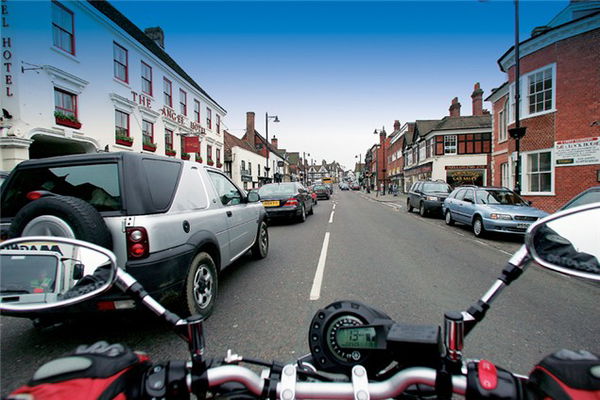Developing your 'mental radar system' when riding in traffic
Because BAE hasn't made a helmet-mounted radar yet

By Alan Dowds
FIGHTER jets have complex radar systems to let them know what's going on around them. Bikers could do with something similar – but until BAE builds us all a helmet-mounted phased-array setup, we need to use something else...
You can, to a degree, do something similar in your head, by constant scanning of inputs, then analysing and building up an internal 'radar screen' of what's around you. We all do this all the time of course, but recognising it, honing and training your internal patterns of thinking can improve it. And that will make you faster – and safer – when riding in traffic.
Here are our five tips for developing that mental radar...

1. Conventional inputs
So, let’s start with the basics. The Mark One Human Eyeball is a cracking system – if kept maintained and calibrated with corrective lenses where needed. And only when used to constantly take in the vital stuff around you: other cars, bikes, pedestrians, cyclists, road hazards, etc. So pay attention.
Your mirrors are a big asset – and keeping them well-adjusted and clean is important. On a bike, you're generally travelling more quickly than other traffic, especially if making your way through jams. So attention should bias towards the front, but keep the rear in mind, for faster riders coming up behind. Never assume nothing is faster than you.
You get a feeling for stuff on the road. A situation might make you uneasy for reasons unclear. The brain is a wondrous thing, able to recognise sets of circumstances that have proved hazardous in the past, sometimes before we are able to process them consciously. So don’t ignore these instincts – roll off for a moment and take stock.
Less spookily, your peripheral vision can be an excellent additional input. The human eye is better-tuned to small movements at the edge of its vision, like a wheel turning on a parked car, or a pedestrian emerging from behind a bus. Focusing hard on a main central vision point can enhance the peripheral sight – something jugglers know about, and useful when filtering.
Fighter jets have massive computers to bring all the sensor inputs together – but you have an even better option: your brain. When riding, try to switch into a 'mode' where you're analysing the inputs, ranking them for importance, then storing them short-term, until they become outdated. So when you're stopped at a red light, you should have a total 3D picture in your head of all the traffic stopped next to you, what's opposite, and everything else around. Is that bloke with the pram going to risk crossing on red? Will the GTI on the other side try a quick right turn in front of you when he sees amber? Is that orange flashing light up ahead roadworks or a broken-down car? How deep is that puddle in the middle of the junction?
Okay, for much of a motorway commute, you might not be in this high state of mental tune. It takes effort of course – your brain uses more energy than any other organ, and you can't keep the effort up indefinitely. But you can crank it up and down as needed: if you're in a settled state of traffic, at a reasonable speed, you'll drift down a notch in terms of awareness. Then, when you get into town, your awareness levels will come back up again.
Recognising the different awareness requirements, and consciously changing them up or down, can again improve your internal riding 'software'. And this is the kind of thing that really experienced riders take for granted, after hundreds of thousands of miles on the road. So get out there and ride, too.
- Alan Dowds is a motorcycle journalist of more than 20 years, a fast road and track rider and a force of nature through town traffic.











